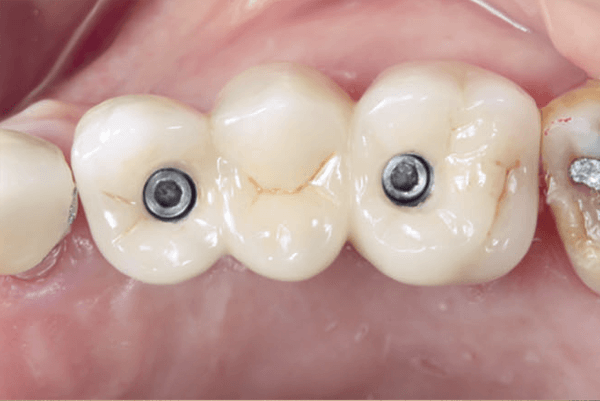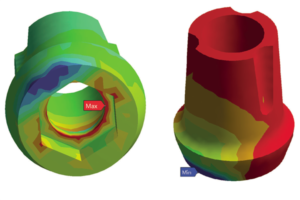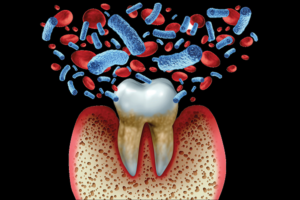Trabalho apresenta caso clínico com personalização dos transferentes de moldagem, garantindo a transferência do perfil de emergência para uma prótese final de três elementos.
AUTORES
Guilherme da Rocha Scalzer Lopes
Pós-doutorando do Depto. de Materiais Odontológicos e Prótese – ICT-Unesp.
Orcid: 0000-0002-4310-0082.
Jefferson David Melo de Matos
Doutorando em Biomateriais no programa de pós-graduação em Ciências Aplicadas à Saúde Bucal – ICT-Unesp.
Orcid: 0000-0003-4507-0785.
Caique Marques Casarini
Cirurgião-dentista – ICT-Unesp.
Orcid: 0000-0001-6915-4612.
Marco Antonio Bottino
Professor titular do programa de Odontologia Restauradora, Materiais Odontológicos e Prótese – ICT-Unesp.
Orcid: 0000-0003-0077-3161.
Nathália de Carvalho Ramos
Professora assistente do Depto. de Odontologia – Universidade São Francisco.
Orcid: 0000-0002-0977-5350.
RESUMO
Objetivo: o objetivo deste trabalho foi apresentar um caso clínico que realizou a personalização dos transferentes de moldagem, garantindo a transferência do perfil de emergência para uma prótese final de três elementos. Terapia aplicada: paciente do sexo feminino, com 71 anos de idade, compareceu à clínica privada com o objetivo de substituir a prótese parcial removível por uma prótese implantossuportada na região dos elementos 24 a 26. Foi realizada a instalação de implantes cone-morse (Intraoss) na região do 24 (3,75 mm x 11 mm) e do 26 (3,75 mm x 9 mm). Após cinco meses da instalação dos implantes, foi realizada a cirurgia de reabertura e a instalação de um cicatrizador de 3,3 mm e 4,5 mm, ambos com transmucoso de 2,5 mm, sobre os implantes 24 e 26, respectivamente. Discussão: a correta transferência das informações dos tecidos moles peri-implantares é de extrema importância para que o técnico possa confeccionar as peças protéticas conforme a situação clínica. E essa transferência não se restringe aos casos de implantes, pois ela também se faz necessária nos casos de próteses fixas sobre dentes, em que também devem ser enviadas essas informações dos tecidos gengivais, principalmente na região de pôntico. Conclusão: nas reabilitações implantossuportadas, as etapas que envolvem a prótese temporária são fundamentais para uma adequada manipulação e posicionamento dos tecidos peri-implantares.
Palavras-chave – Prótese dentária; Implantes dentários; Odontologia; Condicionamento gengival.
ABSTRACT
Aim: the objective of this work is to present a clinical case that performed the customization of the impression copings, ensuring the transfer of the emergence profile to a final three-element prosthesis. Case report: This 71 years-old, female patient, attended to private clinic with the objective of replacing the removable partial denture with an implant-supported prosthesis in the region of elements 24 to 26. Morse taper implants were installed in the region of 24 (3.75 x 11 mm) and 26 (3.75 x 9 mm) – Intraoss. Five months after implant placement, the dental implants were exposded an healing abutments (3.5 mm ; 4.5 mm) with 2.5 mm transmucosal collars were installed over the implants at the 24 and 26 positions. Discussion: the correct transfer of information from the peri-implant soft tissues is extremely important so that the technician can make the prosthetic parts according to the clinical situation. And this transfer is not restricted to cases of implants, as this transfer is also necessary in cases of fixed prostheses on teeth, where this information must also be sent from the gingival tissues, especially in the pontic region. Conclusion: in implant-supported rehabilitations, the steps involving the temporary prosthesis are essential for an adequate manipulation and positioning of the peri-implant tissues.
Key words – Prosthodontics; Dental implants; Dentistry; Soft tissue conditioning.
Referências
- Monaco C, Scheda L, Baldissara P, Zucchelli G. Implant digital impression in the esthetic area. J Prosthodont 2019;28(5):536-40.
- Joda T. Time-dependent supraimplant mucosa changes: short communication. Int J Oral Maxillofac Implants 2015;30(3):619-21.
- Bukhari SA, Proussaefs P, AlHelal A, Garbacea A, AlBader B, Kattadiyil MT. Use of implant-supported custom milled impression copings to capture soft-tissue contours and incisal guidance. J Prosthodont 2019;28(4):473-9.
- Flügge T, van der Meer WJ, Gonzalez BG, Vach K, Wismeijer D, Wang P. The accuracy of different dental impression techniques for implant-supported dental prostheses: a systematic review and meta-analysis. Clin Oral Implants Res 2018;29(suppl.16):374-92.
- Papaspyridakos P, Vazouras K, Chen YW, Kotina E, Natto Z, Kang K et al. Digital vs conventional implant impressions: a systematic review and meta-analysis. J Prosthodont 2020;29(8):660-78.
- Zhuang J, Wang Y, Song Y, Qu F, Xu C. The application of individualized abutment-crown integrated provisional restoration in optimizing the peri-implant soft tissue contour in the esthetic zone. J Esthet Restor Dent 2021;33(4):560-6.
- Nam J, Aranyarachkul P. Achieving the optimal peri-implant soft tissue profile by the selective pressure method via provisional restorations in the esthetic zone. J Esthet Restor Dent 2015;27(3):136-44.
- Alani A, Corson M. Soft tissue manipulation for single implant restorations. Br Dent J 2011;211(9):411-6.





